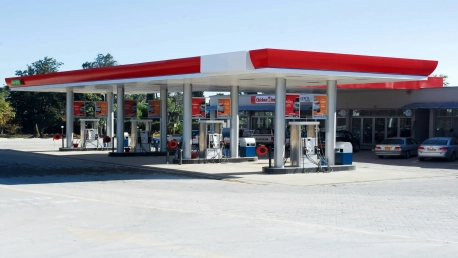The pandemic’s shockwaves have disrupted the gas station POS system market, and understanding its ripple effects has never been so critical. Industry players are rewiring strategies in real-time to navigate the tumultuous market currents, pivot swiftly, and cling to opportunities in the uncharted waters of post-pandemic commerce.
Impact of COVID-19 on the Gas Station POS System Market
The Pre- and Post-Pandemic Market Scenario
Prior to the arrival of COVID-19, the gas station POS system market was navigating a landscape shaped by technological innovations and consumer behavior shifts. With the pandemic’s onset, the market has seen unprecedented disruptions. Gas stations, essential service providers, have had to quickly adapt, often transitioning to contactless transactions and enhanced safety protocols, thus placing new demands on POS systems. The variability of market conditions across the globe further complicates the task, with businesses forced to scrutinize and modify their operations to withstand the new market norm.The post-pandemic era has sharpened focus on resilience and flexibility. Industry players that once thrived on predictability are now recalibrating to emerge stronger. The adoption of cloud-based and web-based systems has accelerated, reflecting the industry’s urgency to stay connected and responsive to dynamic needs. In tandem, companies are diversifying their strategies to mitigate risks, such as supply chain disruptions, and to seize emerging opportunities in a rebalanced market landscape.
Emerging Market Dynamics
The market dynamics of the gas station POS system industry have indeed shifted in the pandemic’s wake. New trends, driven by heightened hygiene concerns and a push for digitization, are shaping demand within the industry. Customers now prefer quick, touch-free transactions, and proprietors are seeking sophisticated POS solutions to match these expectations. The increases in remote work and travel restrictions have caused unexpected fluctuations in fuel consumption patterns, precipitating the need for highly adaptable POS systems.These emergent trends are likely to have lasting impacts on the market’s evolution. Contactless payment options are expected to become a standard feature, while data analytics and consumer behavior tracking via POS systems are poised to become critical for strategic decision-making. In essence, the pandemic is not just a challenge to overcome but a catalyst for innovation and growth within the global gas station POS system market.
Market Segmentation and Growth Opportunities
By Product Type
The choice between cloud-based and web-based POS systems has become a pivotal decision for the modern gas station operator. Cloud-based solutions tout the advantages of universal accessibility, regular updates, and enhanced data security. On the flip side, web-based systems are often favored for their perceived reliability and control, particularly by operators leery of third-party dependencies. Determining the most suitable product type is contingent on the gas station’s size, with larger stations typically demanding more robust and feature-rich solutions to cater to higher transaction volumes.In exploring current market preferences, it’s clear that a hybrid approach is manifesting. Many operators are blending cloud-based and web-based systems to leverage the strengths of each. This flexibility caters to both the daily operational needs and strategic growth considerations. Adoption trends have shown a steady incline for cloud-based systems, particularly among small to medium gas stations looking to enhance operational efficiency and customer experience without exorbitant costs.
By Application
The needs and preferences of gas stations with regards to POS systems vary significantly by size. Larger stations, often part of chains, require comprehensive systems that can handle complex transactions and integrate with other business functionalities. Meanwhile, small to medium stations prioritize ease of use, affordability, and the flexibility to scale. These diverging needs are reflected in the adoption trends within the market. As technology advances, the gap between the sophistication levels of systems available to large and small operators is narrowing, revealing growth opportunities across varied market segments.Market analysis points to the burgeoning potential for specialized POS features tailored to niche needs. As the landscape of gas station operations diversifies, the POS systems that can best amalgamate versatility with user-friendliness are likely to dominate. Beyond just processing payments, future POS systems are predicted to act as hubs for loyalty programs, targeted marketing, and inventory management, marking an evolution from a transactional tool to a comprehensive business solution.
Competitive Analysis and Strategic Positioning
Key Industry Players
The battleground that is the gas station POS system market is home to marquee names like Verifone, Gas Pos, LS Retail, NCR, and Gilbarco Veeder-Root. These leaders are not just surviving; they’re actively shaping the market’s direction. They have substantial market shares and have been instrumental in defining industry standards. Continuous innovation and strategic partnerships are their hallmarks, enabling them to maintain a competitive edge. Notably, their efforts to enhance customer engagement and integrate additional services into their POS offerings reflect a strategic foresight that aligns with evolving market demands.Amidst increasingly stiff competition, these key industry players are guided by a common principle: staying ahead requires agility. The analysis of their market shares coupled with their strategic positions indicates a willingness to pivot, whether through technology adoption, market expansion, or customer-centric operations. This willingness not only preserves their lead but also sets the pace for the entire market.
Business Strategies and Market Adaptation
In a market rippling from the pressures of the pandemic, gas station POS system companies are honing strategies that can turn challenges into victories. Innovation is the watchword as businesses strive to outpace the rapid changes. The introduction of AI-based analytics, IoT connectivity, and enhanced cybersecurity features are just some manifestations of this innovative spirit. These technological advancements offer an edge, but the true litmus test for companies is in their ability to mold these innovations into solutions that resonate with end-users and solve real-world problems.Adjustments in market approach are equally vital as innovation. Stakeholders are scrutinizing their traditional risk assessment models and incorporating more scenario-based planning. By anticipating change rather than reacting to it, companies seek to master market adaptation—identifying not only survival tactics but also pathways to thrive amidst ongoing volatility. This competitive agility underscores the evolution of business strategies in the gas station POS system market.
Comprehensive Market Outlook
Technological and Consumer Trends
Staying on the cutting edge of technology is an unspoken mandate in the gas station POS system market. Advancements are rapid and unrelenting, and only those businesses that keep pace will remain relevant. Operators must now consider not only what POS system technology can do today but what it will need to accomplish tomorrow. This foresight is ever crucial as consumer behaviors and expectations continue to evolve. The direction in which these technological and consumer trends tug the market is significant, dictating the features and functionalities that will become standard in the near future.However, the importance of technology does not overshadow the evolving needs of the customers. Their preferences, purchasing patterns, and interactions with POS systems furnish invaluable insights that drive system innovations. Features such as loyalty programs, personalized promotions, and enhanced user interfaces are being developed in response to consumer demand for more engaging and convenient shopping experiences at gas stations.
Economic and Regulatory Factors
Economic headwinds and regulatory frameworks are formidable forces that shape the gas station POS system market. Fluctuating economic conditions can stifle or stimulate market growth, and businesses must remain nimble to either brace against or harness these economic tides. Regulatory compliance is a maze that must be navigated astutely. Stations not only have to conform to payment processing standards but also to environmental and operational regulations that vary across regions. It’s a delicate balance between technological dreams and the pressing realities of economics and regulations.Navigating these intricacies requires foresight and adaptability. The market is subject to the ebbs and flows of broader economic conditions which can influence consumer spending and investment prospects. Similarly, shifts in regulatory landscapes necessitate updates or entirely new features in POS systems to ensure ongoing compliance. As businesses factor these considerations into their strategies, they find themselves juggling the pursuit of innovation with the need to satisfy economic and regulatory demands.
Final Thoughts on Market Resilience and Agility
The pandemic has sent shockwaves through the gas station point-of-sale (POS) system industry, creating an urgent need to grasp the resulting changes. Stakeholders in this sector are hastily reconfiguring their tactics to keep afloat amid the often rough and unpredictable economic conditions. It’s essential for these industry participants to revise their approaches on the fly, ensuring they can pivot quickly and seize the emerging opportunities that the post-pandemic market landscape offers. The way commerce operates has been forever altered, making navigation through these new waters critical for anyone looking to maintain or gain a competitive edge in the altered gas station POS system market. Understanding and adapting to these market shifts has become a top priority as companies work to stabilize and potentially capitalize on the new normal that COVID-19 has introduced to the world of retail and beyond.









